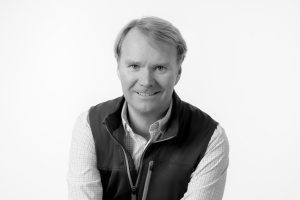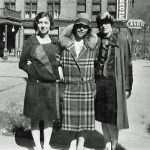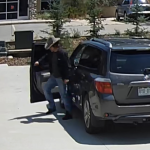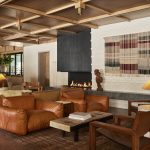Beyond the Algorithm: Designing with place and people in mind
A conversation with Alex Klumb, partner at CCY Architects, on collaboration, challenges, and the joy found in intimate, gem-scaled projects

Courtesy photo
For more than 25 years, architect Alex Klumb has been shaping the built environment of the Roaring Fork Valley and beyond. A partner at CCY Architects since 2019, Klumb has guided projects ranging from large-scale hospitality work to intimate family homes. What unites them all, he says, is a passion for design and the belief that great architecture is born out of relationships.
We sat down with Klumb to talk about Aspen’s clientele landscape, the realities of running a firm in a high-cost valley, and why his current dream project is only 500 square feet.
Q: Making partner is a huge accomplishment. What did that take?
Alex: Partnership at CCY has always evolved over time. The firm is more than 50 years old, and each generation has carried forward the idea of transition and collaboration. For me, stepping into partnership was a natural progression of merit, talent, and commitment.
Q: What sets CCY apart?
Alex: We have an outstanding reputation for building strong relationships with our clients, which is likely the most important part of the process. It’s the foundation that allows us the opportunity to execute our passion for design on behalf of our clients.
Q: Is intimate collaboration a prerequisite for success?
Alex: We’re not the kind of “cape-wearing architects” who unveil a grand design in the beginning and then schedule the next meeting after the build is complete. The foundation of our process is collaboration. We check in weekly or monthly, review ideas, and refine together. It’s about forming something together, not necessarily dictating it.
Every client is different — different backgrounds, motivations, and expectations. But we believe that for a project to succeed, the relationship itself has to be strong. Some clients want limited involvement, and in those cases, we may not be the best fit.
Q: What’s the biggest business challenge for CCY right now?
Alex: The cost of living in the valley is impossible to ignore. Attracting and retaining top talent means acknowledging that reality. Our answer has been flexible hours, flexible ways of working — paired with a culture that makes people want to come into the studio.
If it wasn’t for the pull of the valley and the lifestyle it offers, it would be a much bigger challenge, though. At the moment, we are fortunate to have a team that wants to be here, collaborating in person, and that makes a difference.
Q: What makes a great architect at CCY?
Alex: First and foremost, a passion for design. That’s the heartbeat of everything we do.
Equally important is a willingness to collaborate. Much of our work begins with a charrette process — an intensive, multi-day design session where we sketch, test, and sometimes fail before finding the best solution together. That openness to exploration is essential.
Q: You emphasize ‘passion for design,’ which in my mind can mean a variety of things. Can you unpack what that means to you?
Alex: To boil it down, I would say it’s a razor-sharp focus from conception to execution — from the initial concept to the intentional fasteners on a dining room table.
In Aspen, we deeply revere the beauty of our surroundings and strive to erase the distinction between the inside and the out. This is obviously a modernist trait, and modern can be a dangerous term — anybody can put down a few glass boxes in a beautiful place, and it might work. We ask the question: “How can we add texture and context while connecting people to their surroundings?”
Q: You have been with CCY through major downturns like 2008 and COVID. What did you learn from those moments?
Alex: Yes, the Great Recession of 2008. Two-thirds of our work stopped, almost overnight. We had to downsize, but we also used it as a chance to evolve — taking on in-house net-zero projects, investing in new software, and sharpening our process. Coming out of that recession, we were stronger and ready to hit the ground running.
COVID was different. We already had international clients, so Zoom and remote collaboration weren’t new to us. The harder part was the uncertainty, those restless nights wondering if it was 2008 all over again. But instead, the market here took off. We had to balance the flood of demand with honesty, telling clients what was realistic and not overcommitting.
Q: Did you notice trends in design requests during the pandemic?
Alex: Definitely. For a while, bigger was better — multi-generational homes, sport courts, everything under one roof. That trend faded as the world normalized, but it was fascinating to see how quickly client priorities shifted.
Q: How does CCY approach evolving building codes and regulations?
Alex: Some see them as obstacles, but I see them as catalysts. The evolving energy code, for example, pushes all of us toward smarter, more sustainable development. It’s not always easy to keep up, especially working across different jurisdictions, but it’s the responsible path forward.
Q: What’s a dream project for you?
Alex: Our work includes larger hospitality projects and wonderful community-based developments, and they are, without a doubt, interesting and complex. We are grateful to have the opportunity to work on that scale. But there’s something about a simple gem of a project.
We’re designing a chapel outside of Telluride right now that’s 500 square feet — a beautiful and simple structure. That’s living the dream.
Q: What advice would you give young architects starting their careers today?
Alex: Use your 20s to explore. Work in different cities, with different firms, maybe even internationally. Those experiences give you perspective and help you decide where you want to settle. For me, it was New York first, then realizing there was more to life and making the move to Aspen.
Q: How would you describe the qualities that make a good architect, and how has that definition changed over the years?
Alex: If you had to ask the 23-year-old me, he would probably say the answer is somewhere in the minutiae of design, you know, Bauhaus or some other design rigor. But now I’d say there are several buckets, especially considering my position in the firm.
There’s design, but then there’s also business management — we’re a firm of over 40 people now, and that requires substantial attention. And on top of that, there’s business development, and most importantly, client relationships.
The surprising truth is that the amount of time architects actually spend designing is much smaller than people imagine. We work hard to protect that time, set it up for creativity, and make it count.
Q: Last question! What do you love most about living here?
Alex: I came for the outdoors and stayed for the balance. I can have a serious professional career, raise a family in a great community, and still sneak out for a sunrise skin or a bike ride from our office trailhead. That’s hard to beat.
For Klumb, architecture is less about grand unveilings and more about collaboration, honesty, and respect for place. Whether designing a multimillion-dollar estate or a small mountain chapel, his philosophy remains the same: great design starts with great relationships.
Bryan Welker lives and breathes business and marketing in the Roaring Fork Valley and beyond. He is President, Co-founder, and CRO of WDR Aspen, a boutique marketing agency that develops tailored marketing solutions. Who should we interview next? Reach out and let us know bryan@wdraspen.com.
Coyote or gray wolf? How to tell the difference in the Roaring Fork Valley
As hunting season gets under way, Colorado Parks and Wildlife is warning those with coyote tags to be aware of the differences between coyotes and wolves.









